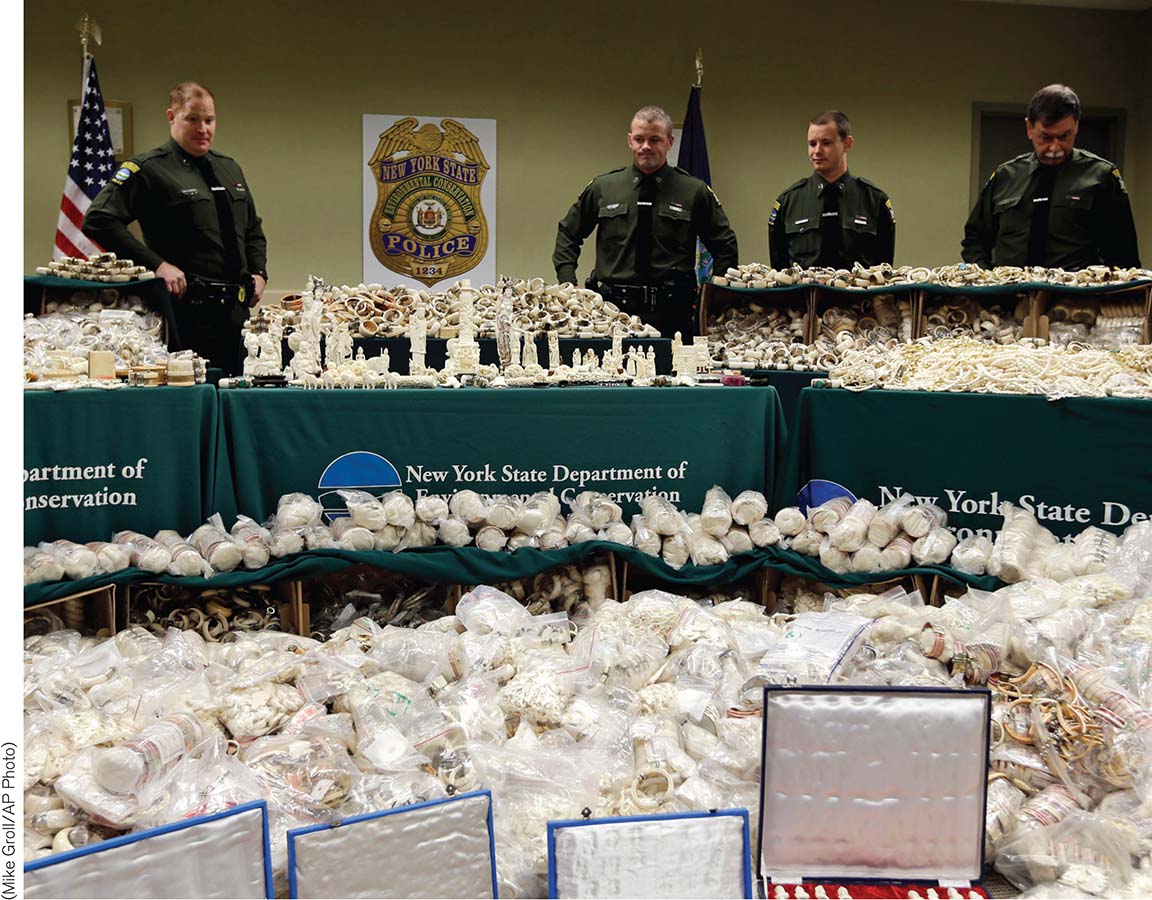3.8 Plant and wildlife trafficking are growing dangers to species
With rhinoceros horns selling for more than $100,000 per kilogram in Asia as a purported cancer treatment, it’s no surprise that rhinoceros poaching in South Africa increased 30-fold between 2007 and 2011. The black rhino in western Africa has already been declared extinct, and the northern subspecies of white rhino is on the brink of extinction. Illegal trading in wildlife and plants is one of the top three threats to endangered species worldwide (Figure 3.23). Demand for exotic pets, flashy hunting trophies, bush meat, and traditional medicines drive wildlife trafficking. Some of the primary targets include rare parrots, for the pet trade; tigers, for skins and traditional medicines; elephants, for ivory; bears, for trophies and traditional medicine; and exotic tropical woods, for furniture. The Congressional Research Service has estimated that the black market value of illegally traded wildlife is worth between $5 billion and $20 billion each year. The trade is not just a problem for African countries or other distant places: In 2012 two Manhattan jewelry store owners pled guilty to selling more than $2 million worth of elephant ivory.
CARVED IVORY CONFISCATED BY CUSTOMS AGENTS

FIGURE 3.23 Wildlife trafficking involves the movement of endangered live animals and plants and wildlife products, such as ivory and skins. This illicit trade is valued in billions of U.S. dollars annually.
(Mike Groll/AP Photo)

How might the poachers who kill animals for the illegal wildlife trade potentially play a useful role in the protection of the wildlife they hunt?
In many cases, the impacts of wildlife trafficking extend beyond the wildlife killed or captured. For example, the use of cyanide to stun coral reef fish sold in the aquarium trade has done massive damage to coral reef ecosystems, which are one of the most productive and diverse ecosystems on Earth. The wildlife trade also holds the potential to spread disease to humans and other wildlife species. For instance, prior to the 1970s, the African clawed frog (Xenopus laevis) was widely traded as a pregnancy test—frogs lay eggs when exposed to the urine of a pregnant woman—and, today, it remains a model laboratory animal for a variety of experiments. Scientists believe trade in this frog may be at least partly to blame for the global spread of the chytrid fungus, a pathogen that has led to amphibian die-offs around the world.
Unfortunately, criminal networks that focus on wildlife have increased in recent years because of globalization and increasing wealth in countries such as China, where there is high demand for traditional medicine derived from animals, such as snake blood wine and foods like shark fin soup.
Think About It
How are drug trafficking and plant and wildlife trafficking similar? How are they different?
There would be no plant and wildlife trafficking without demand. What tools could be used to substantially reduce demand for illegal plant and wildlife products?

